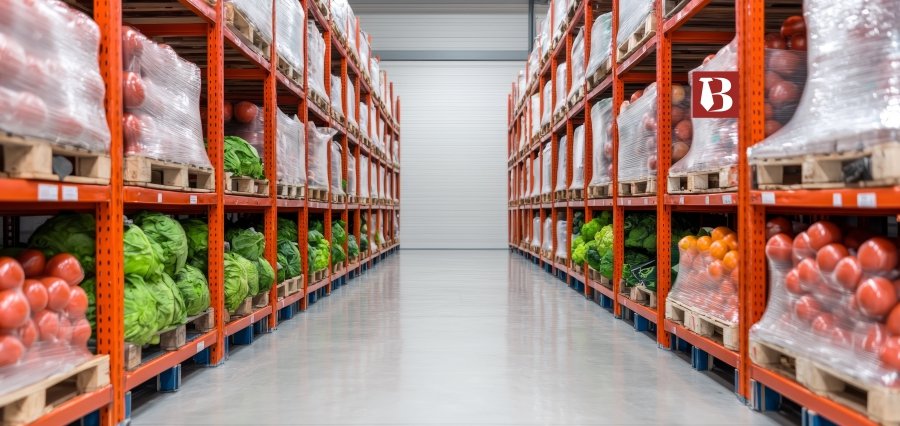Right Storage
Indian agro and food industry has witnessed revolutionary progress over the last two decades. Nevertheless, as far as increased production and marketing access are concerned, the biggest issue still prevailing is the problem of post-harvest losses caused by poor transportation and storage facilities. As far as this is concerned, the awareness of cold chain preservation in India has gained a very crucial status. Cold chain refers to a temperature-controlled supply chain for maintaining the quality and safety of perishable products such as fruits, vegetables, dairy, meat, and pharmaceuticals. As consumer demand increases for fresh, safe, and quality products, development of cold chain infrastructure is becoming the need of the hour for India’s economic growth and food security.
India’s previous cold chain network was underdeveloped, fragmented, and concentrated on a finite sequence of commodities such as potatoes and milk. The game rules changed as recently as the recent past, however, as concerns cold chain preservation strategy in India. With the increasing government push to double farmers’ income and minimize food wastage, huge investment is being poured into scaling up and expanding the cold chain infrastructure in the country. Initiatives such as the Pradhan Mantri Kisan Sampada Yojana (PMKSY), which offers funding for establishing integrated projects for cold chains, have prompted public and private sector investment in this sector of crucial significance.
Greater application of technology is perhaps the most significant innovation in cold chain maintenance in India. Sophisticated methods of refrigeration, temperature monitoring in real time, data analysis, and automation are gaining popularity in cold chain operations. These technological advances not only allow for maintenance of the best temperatures during transportation and storage but also allow for traceability along with maintenance of the safety standards. Supply managers are now able to monitor remotely and react quickly in the event of temperature change via mobile-based solutions and IoT sensors, thus cutting loss and wastage.
Increased organized retail, e-commerce, and food online websites have also done a long way to drive the cold chain preservation boom in India. BigBasket, Amazon Fresh, and Reliance Retail, among others, depend on effective cold chains to supply fresh vegetables and fruits and dairy products to consumers. This has led logistics players to heavily invest in cold-warehouse storage, cold storage trucks, and refrigerated shipping containers. As growing urbanization and changing consumer attitudes spur demand for strong cold chains in urban and rural markets, logistics providers are increasingly looking at cold chain infrastructure as a key area of focus.
The second trend very much at the forefront is geographic coverage of cold chain hubs. Cold storage facilities had previously been set up mostly in high-value agri belts and urban locations. Currently, there is an attempt to set up cold chain units in Tier-II and Tier-III towns and remote agri belts. This decentralisation is needed to make the farmers self-reliant and middleman-free, and enable them to reach national and international markets. Conservation of perishables in the cold chain in India at farm gate level ensures that the aforesaid product is in a position to maintain the quality from the production to the consumption level, to the advantage of the producer and consumer both.
Sector-wise, the conservation of cold chain in India is gaining increased importance not merely for food but also for such pharmaceuticals as vaccines and temperature-controlled drugs. The COVID-19 crisis put into focus the pivotal role of cold chain infrastructure in health. With India being one of the largest producers and exporters of vaccines, there has to be an assured cold chain not only for national immunization programs but also for global pharma supply chains. Growth in cold chain capacity has therefore become the priority in public health, agriculture, as well as food security.
Policy intervention has been the main impetus to driving the development of cold chain preservation in India. Government initiatives like the Mission for Integrated Development of Horticulture (MIDH), Agricultural and Processed Food Products Export Development Authority (APEDA), and National Centre for Cold-chain Development (NCCD) have been at the forefront in providing subsidies, regulations, and capacity-building programs. They are prioritizing infrastructural gaps, optimization of best practices, and driving cold storage and logistics innovation. Besides this, opening up foreign direct investment (FDI) in the food retail and warehouse sector has allowed international players to invest in India’s cold chain development.
But there are limitations. Insufficient capital investment and operational costs deter small and medium-sized businesses (SMEs) from investing in the cold chain industry. Power is an issue, especially in rural regions where there isn’t a proper electricity supply. For better preservation of the cold chain in India sustainably, more emphasis is now being laid on utilizing renewable energy-based cold storages, particularly solar power-based storage. Not only are they cost-effective when running, but also in line with India’s climate agenda and sustainability vision.
The role of public-private partnerships (PPPs) cannot be overstated to serve cold chain preservation in India. PPPs make use of complementarities of both the spaces to establish end-to-end as well as scalable cold chain networks. Some of the finest examples are joint ventures in Maharashtra, Gujarat, and Punjab, where agribusiness companies, logistics companies, and farmer cooperatives joined hands to establish end-to-end cold supply chains. Through these joint ventures, it has been possible that cold chain systems are economically viable and socially viable with coordination and incentives. In the days to come, the growth of cold chain preservation in India is towards innovation, inclusivity, and sustainability. Cold chains not only need to be made available to the small agri-businesses and exporters but to the smallholder farmers, women associations, and small-scale business people too. Training and capacity building will be a vital element in such development. Training the farmers and supply chain personnel in post-harvest handling, temperature control, and market connections will guarantee maximum use of cold chain facilities. Additionally, R&D for low-energy, low-cost storage equipment will be crucial to increasing volumes without placing environmental pressure. In conclusion, India’s cold chain preservation has become a nascent industry that is no longer agriculture’s and logistics’s dormant sector but a prospering industry with far-reaching impacts. Its growth is now a requirement and not an nicety for a nation that wants to attain food security, minimize wastage, benefit farmers, and enhance competitiveness in international trade. Development has been adequate, but continued collaboration among academe, industry, and government remains necessary to solve the problems which continue.”. As India heads towards more sustainable, resilient tomorrow, enhancing cold chain preservation will be key to sustaining inclusive economic growth and better standards of life for millions.









